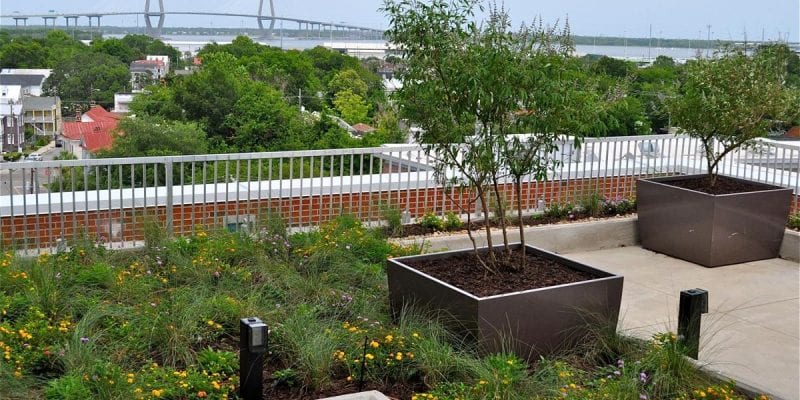The following is from an article in The Post & Courier news paper from June 4, 2017. It covers the growing popularity of green roofs, green walls in South Carolina.
Green roofs, walls gain momentum in South Carolina
THE POST AND THE COURIER – DAVID QUICK – JUNE 4, 2017
When Michael Whitfield started Charleston-based Green Roof Outfitters in 2008, he was sailing in virtually unchartered waters in South Carolina and was among the vanguard in the Southeast.
And those seas were fairly rough.
“Nobody wanted to be the guinea pig,” says Whitfield, who actually changed his business model from being an installer to primarily providing green roof products. “In the first three years, I had zero projects here. In the last six months, we have either bid or installed on five.”
Among the local projects he has worked on is a green roof on the Rooftop Terrace of the SkyGarden Apartments, under construction now on Woolfe Street; a green wall inside the Half Mile North development; and a green roof atop The Refinery building at the 1600 Meeting Street development.
Whitfield is not the only one noticing a change in attitudes among architects, government officials and developers in the Palmetto State.
Green roofs and walls, especially in cities along the I-26 corridor, are starting to grow on government office buildings; high-end office, hotel and apartment structures; and schools and houses in recent years.
Green roof benefits
Also known as “living roofs,” green roofs are simply a vegetated covering for a roof. That covering has an array of benefits beyond aesthetics.
Green roofs reduce energy costs, especially during the heat of summer. They retain and detain storm water and increase the longevity of roofs by blocking ultraviolet rays and easing extreme surface temperatures. They also absorb pollutants.
The structures provide habitat for pollinators and birds and make space more suitable for humans.
Organizations pursuing prestigious LEED (Leadership in Energy and Environmental Design) accreditation can gain numerous credits through the use of green roofs.
Columbia’s pilot
As part of Columbia’s first effort to pursue a LEED silver certification on a municipal complex,

